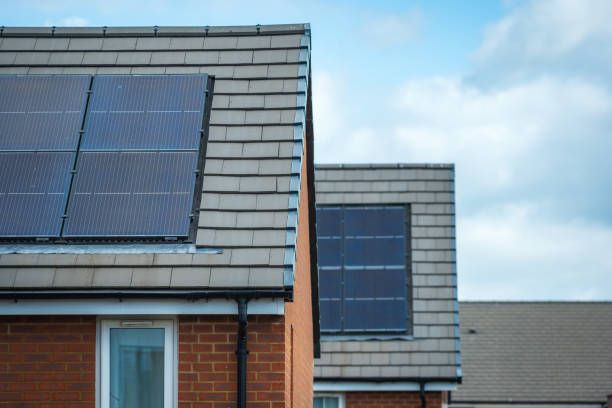Could you benefit from the Smart Export Guarantee?

As energy prices fluctuate and the demand for clean energy increases, many UK households and small businesses turn to renewable energy solutions. While these systems can help reduce reliance on the national grid and lower energy bills, many users generate more electricity than they consume. So, what happens to the excess energy?
What Is the Smart Export Guarantee?
The UK government introduced the Smart Export Guarantee (SEG) in January 2020. The scheme allows small-scale electricity generators to receive payments for the excess electricity they export back to the grid. The initiative replaced the older Feed-in Tariff (FiT) scheme and is designed to encourage more people to invest in renewable technologies. Unlike the Feed-in Tariff, the Smart Export Guarantee does not include fixed payments set by the government. Instead, energy suppliers set tariffs for exported electricity, meaning customers must shop around to find the most competitive rates.
How Does the Smart Export Guarantee Work?
If you generate electricity using an approved renewable energy system and your home or business does not use all of it, the excess energy can be sent back to the National Grid. Under the Smart Export Guarantee, energy suppliers pay you for each unit of electricity you export. These payments are calculated based on a tariff set by the supplier - usually expressed in pence per kilowatt-hour (kWh).
Unlike the Feed-in Tariff, which included both generation and export payments, the Smart Export Guarantee focuses solely on electricity exported to the grid.
Tariff rates under the Smart Export Guarantee can vary widely between suppliers. While some suppliers offer rates as low as 1p per kWh, others provide more generous rates, sometimes in the range of 5p to 15p per kWh. It is important to understand that the government does not fix these rates, so you are encouraged to compare offers and switch suppliers if necessary to maximise your return.
Who Is Eligible for The Smart Export Guarantee?
The Smart Export Guarantee is particularly beneficial for individuals or businesses that already generate their own renewable electricity or are considering doing so soon.
Eligibility for the SEG requires that your installation meets a few specific conditions:
- The system must not exceed the maximum capacity of 5 MW (or 50 kW for micro-CHP systems).
- It must be certified under the Microgeneration Certification Scheme (MCS) or an equivalent standard.
- You must have a smart or export meter capable of recording half-hourly readings.
Is the Smart Export Guarantee Worthwhile?
Whether the Smart Export Guarantee is worth your while depends on several factors, including how much surplus electricity you generate, the tariff rates available, and how much electricity you use directly within your home or business. While the payments under the Smart Export Guarantee are not massive, they can still make a meaningful difference over time.
However, it is important to manage your expectations. Smart Export Guarantee payments are unlikely to result in a large income stream. The main benefit of a renewable energy system still comes from the energy savings achieved by consuming your power.
Things To Consider
Suppliers set their rates, which can change over time. You should stay informed and be willing to switch suppliers if a better rate becomes available. Some suppliers offer fixed-rate Smart Export Guarantee tariffs, while others offer variable rates that fluctuate with market conditions.
Battery storage systems can also complicate things. Not all Smart Export Guarantee licensees are willing to pay for exported electricity that has first been stored in a battery. Therefore, if you have or are planning to install battery storage, check the terms and conditions of your chosen tariff.
Setting up a system that qualifies for the Smart Export Guarantee can require upfront investment. While costs have decreased recently, the initial outlay is still expensive for many. It’s essential to carry out a detailed cost-benefit analysis before proceeding.
How Much Can You Make Through The Smart Export Guarantee?
As of now, Smart Export Guarantee tariffs range broadly. Some suppliers offer as little as 1p per kWh, while others may offer more competitive rates of up to 15p per kWh. The variability depends on market conditions, your supplier’s policies, and whether you opt for a fixed or variable tariff.
Suppose you have a standard 4 kW solar PV system, a common size for UK households. Over a year, this system might generate around 3,800 to 4,200 kWh of electricity, depending on your location and weather conditions. If you consume around 50% of this energy in your home and export the remaining 50% back to the grid, you could export about 2,000 kWh annually.
At an export rate of 5p per kWh, that would earn you:
2,000 kWh × £0.05 = £100 per year
At a higher rate of 10p per kWh, your annual earnings would double:
2,000 kWh × £0.10 = £200 per year
If you’re with a supplier offering one of the more generous SEG tariffs at 15p per kWh:
2,000 kWh × £0.15 = £300 per year.
It’s also worth noting that these earnings are not taxable for most domestic users, provided the generation is primarily for personal use and not part of a commercial operation.
While you may not become wealthy selling energy back to the grid, the Smart Export Guarantee provides a reliable and risk-free way to monetise energy that would otherwise go unused.
How can Purely Energy help?
If you want to know more about the Smart Export Guarantee or help lowering your energy costs, contact us at 0161 521 3400 or Info@purelyenergy.co.uk. Alternatively, get a quick quote.
This article was written by Megan Glover of Purely Energy. If there are any suggestions or questions - Please get in touch with us.


